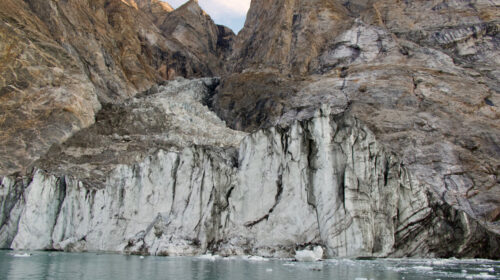13- September (Index Treasure) A melting glacier caused a huge landslide. It triggered a 650-foot mega-tsunami in Greenland last September. Then came something inexplicable: a mysterious vibration that shook the planet for nine days.
In the past year, dozens of scientists worldwide have tried to find out what this signal was.
A new study in the journal Science has an answer. It warns that the Arctic is entering “uncharted waters” as humans warm the planet.
Some seismologists thought their instruments were broken. In September, they began to pick up vibrations in the ground, said Stephen Hicks, a co-author and seismologist at University College London.
It wasn’t the rich orchestra of high pitches and rumbles you might expect with an earthquake. It was more of a monotonous hum. Earthquake signals tend to last for minutes; this one lasted for nine days.
He was baffled, it was “completely unprecedented,” he said.
Seismologists traced the signal to eastern Greenland. But, they couldn’t find a specific location. They contacted colleagues in Denmark. They had reports of a tsunami from a landslide in a remote area called Dickson Fjord.
It was a year-long effort by 68 scientists in 15 countries. They analyzed seismic, satellite, and on-the-ground data. They also studied tsunami wave simulations to solve the puzzle.
What happened is called a “cascading hazard,” Svennevig said, and it all started with human-caused climate change.
For years, the glacier at the base of a huge mountain towering nearly 4,000 feet above Dickson Fjord had been melting, as many glaciers are in the rapidly warming Arctic.
As the glacier thinned, the mountain became unstable. It collapsed on September 16 last year. It sent enough rock and debris into the water to fill 10,000 Olympic-sized swimming pools.
The subsequent mega-tsunami — one of the highest in recent history — set off a wave. It became trapped in the bendy, narrow fjord for more than a week, sloshing back and forth every 90 seconds.
A “seiche” is a wave that moves rhythmically in an enclosed space. It is like water splashing back and forth in a bathtub or cup. One of the scientists even tried (and failed) to recreate the impact in their own bathtub.
Seiches are well-known. But, scientists had no idea they could last so long.
“Had I suggested a year ago that a seiche could last nine days, people would have said that’s impossible,” said Svennevig. He compared the discovery to suddenly finding a new color in a rainbow.
It was this seiche that created the seismic energy in the Earth’s crust, the scientists found.
It may be the first time scientists have directly observed the impact of climate change “on the ground beneath our feet,” said Hicks. And no place was immune; the signal traveled from Greenland to Antarctica in about an hour, he added.




